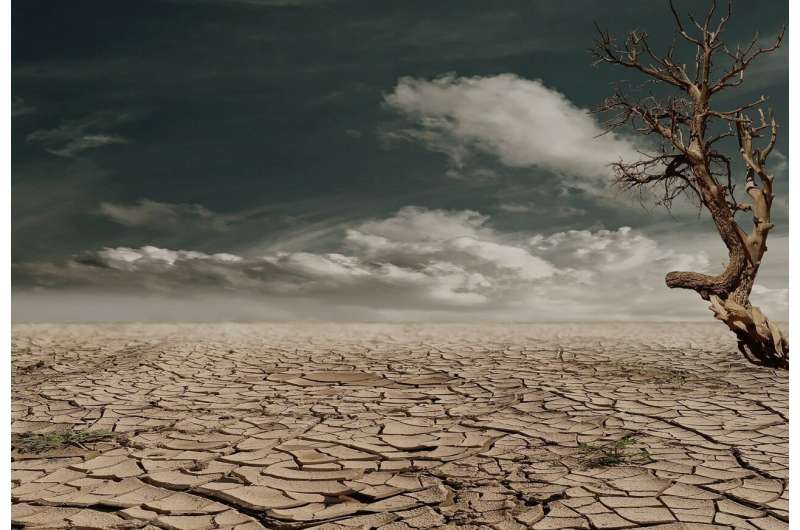
According to new research from the University of East Anglia, there are significant risks to people and the environment due to rising global temperatures.
The study shows that even a modest temperature increase of 1.5C will have serious consequences in many countries. The six countries that were selected for study in the UEA project provide a range of differing sizes and different levels of development on three continents.
The journal Climatic Change published the findings "Quantification of meteorological droughts risks between 1.5 C and 4 C of global warming in six countries."
The paper was led by Dr. Jeff Price and his colleagues in the Tyndall Centre for Climate Change Research at UEA.
The current pledges for climate change, which are projected to still result in global warming levels of 3 C or more, would affect all the countries in this study.
More than 50% of the agricultural area in each country is projected to be exposed to severe droughts lasting longer than one year in a 30 year period with 3 C warming. It is estimated that 80% to 100% of the population in Brazil, China, Egypt, Ethiopia, and Ghana, and nearly 50% of the population of India, will be exposed to a severe dry spell in the next 30 years.
Meeting the long-term temperature goal of the Paris Agreement, that is limiting warming to 1.5 C above pre-industrial levels, is projected to greatly benefit all of the countries in this study.
In the 1.5 C warming scenario, the likelihood of a dry spell is projected to triple in Brazil and China, double in Ethiopia, and increase in India and Egypt.
In a 2 C warming scenario, the probability of a dry spell is projected to double in Brazil and China, triple in Ethiopia, and double in Egypt.
In a 3 C warming scenario, there is a 40% chance of a dry spell in Brazil, China, India, and Ethiopia.
In a 4 C warming scenario, there is a 50% chance of a dry spell in Brazil, China, India, and Egypt.
The increase in the probability of a dry spell increases linearly with temperature. The exception is Egypt, where a small amount of global warming could lead to a large increase in the likelihood of a dry spell.
Prof Rachel Warren, leader of the overall study of which this paper is one output, said that global warming increases the length of the droughts. Even in a 1.5 C warming scenario, there will be long periods of dry weather in Brazil, China, Ethiopia, and other countries.
In a 2 C warming scenario, the length of dry spells in all countries will exceed three years. Severe droughts of longer than five years are projected for Brazil and China in a 4 C warming scenario.
The 1.5 C warming scenario in Brazil, China, Egypt, and India is expected to increase the percentage of land exposed to a severe dry spell of at least a year.
Large areas of India and China are covered in ice and snow. In the 3 C warming scenario, the majority of these areas are projected to face severe droughts lasting longer than a year in the next 30 years.
The water supply for millions of people downstream comes from this area. The Chinese Himalayas hold a lot of water in the form of snow and ice, which could be at risk if the weather gets worse.
It can have a big impact on the economy and the environment. According to the study, if water is available, all six of the countries will need to deal with water stress in the agricultural sector. Global warming increases the amount of adaptation needed to cope with the increase in dry weather.
The same pattern can be seen in urban areas. Competition for water resources and headwater sources can affect the area's performance.
Prof Warren said, "Meeting the Paris Accords could have major benefits in terms of reducing severe Drought risk in these six countries, in all major land cover classes and for large percentage of the population worldwide." This requires urgent global scale action to decarbonize the energy system so that we can reach global net zero greenhouse gas emissions by the year 2050.
More information: Quantification of meteorological drought risks between 1.5 °C and 4 °C of global warming in six countries, Climatic Change (2022). DOI: 10.1007/s10584-022-03359-2 Journal information: Climatic Change